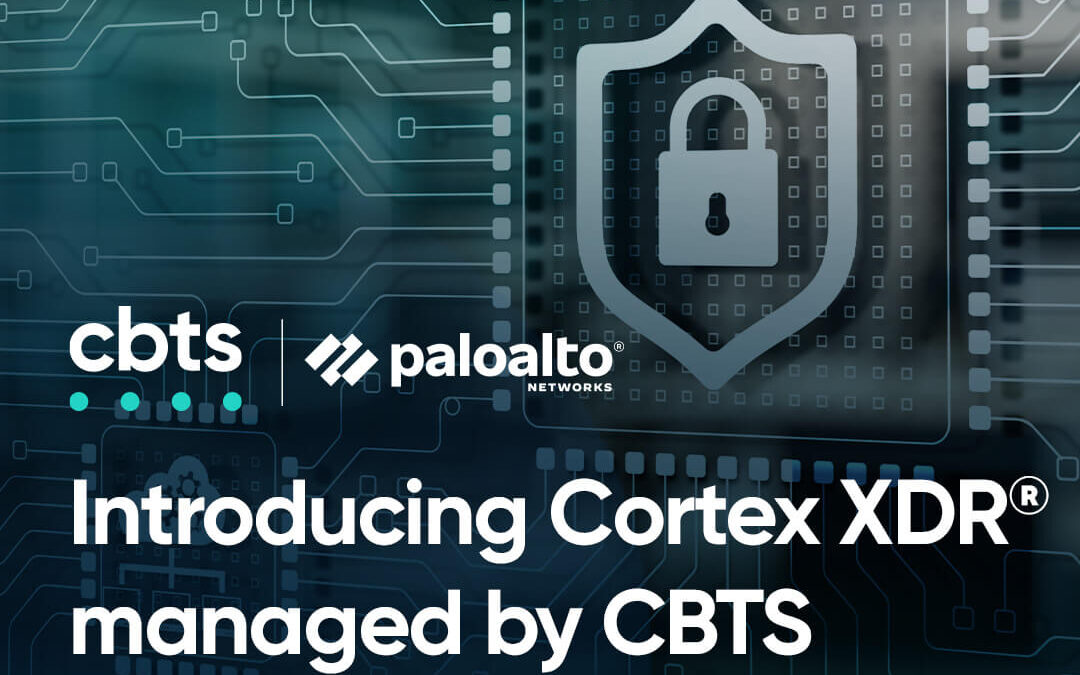
CBTS recently put together a three-part webcast series. Part one of the webcast series, featuring CBTS Sr. Director of Solution Engineering Matt Douglass and CBTS Sr. Sales Engineer Alex Broome, discusses how to maximize the value of your client’s applications, systems, voice, and network to compile data in a single pane of glass to drive business outcomes.
The second part of the CBTS webcast series, featuring CBTS Public Sector Vice President Tim Lonsway, discusses the primary solutions that government and education verticals are looking for and how government engagements differ from commercial engagements.
The final part of the webcast series featured CBTS Channel Chief Rob Messmer moderating a lively discussion with Cincinnati Bell’s SVP & CIO Kevin Murray and CBTS CIO of Healthcare Practice Dustin Leek. The panel discussed what is important for CIOs in the current state of the market, and what solutions technology leaders are implementing that are enabling virtual employees to stay productive and secure.
Kevin and Dustin, tell us a little about your background and experience as a CIO.
“I’ve been with Cincinnati Bell for almost 20 years. For the last 10, I’ve been in the CIO role, and before that, I was supporting our ERP systems. When we were in the wireless business, I oversaw the IT stack, and prior to Cincinnati Bell, I was with Accenture, which was known at the time as Anderson Consulting.” – Kevin Murray, CIO Cincinnati Bell
“I have 15 plus years in healthcare IT, and started at the entry level as an engineer, then finished my career with Health First at the executive strategic level. I experienced nearly every role along the way going from engineer, to data center manager, to a network manager, to infrastructure director, into my final role as CTO at Health First.” – Dustin Leek, CIO of Healthcare Practice at CBTS
Kevin, how has COVID affected IT decision making from your perspective and other CIOs from your peer group?
“Going back to the middle of March, when the shutdown began, my team scrambled to ensure we had everything we were going to need to support thousands of people working from home and all of the vendor partners across the globe. The way we operated went from implementing projects and looking down the road at what our next set of projects would be to the present. Our primary focus was a smooth transition. It was all about stabilizing and getting people into a productive remote environment. That was really the big impact I experienced, and I think my selling partners would have experienced about a three-month jolt to normal business.” – Kevin Murray
Dustin, tell us a little bit about the politics a typical CIO/CTO has to maneuver in the executive leadership ranks?
“You get political pressure from the bottom, as well as the top, if you haven’t developed a partner type relationship with the C-suite. For example, if you don’t keep the doctors happy, they have a hotline to the CEO. It’s much better when you’re viewed as a partner and the business understands how IT helps the business in its objectives.” – Dustin Leek
Dustin, how much does the C-suite gather help from vendors or partners to sell the value proposition to their peers for certain technology solutions?
“To me, that’s the difference between a partnership and somebody who is just selling me stuff, right? The best thing to do is prove that you know the business before you start asking questions. And secondly, that knowledge of the business should help present a business case value during the sales cycle. Ultimately, you’re going to have to sit in front of the board of directors, the board of trustees, and sell the business value.” – Dustin Leek
When a C-suite asks for references around customer experience, how do those evaluations work?
“We have reference calls on large investments that could cost us our jobs. That’s usually one of the boxes I check when you’re going to have those kinds of things. I like to evaluate vendors and partners on: How do they deal with adversity? Are they a partner to their clients? Meaning, they get in there and they figure some things are much more complicated than we thought they were, or we underestimated X, but we should have talked about this, so we’re not going to issue a change order. We’re going to own it, but we want to point out that we’re putting some extra resources on this just to make sure it gets back on track. Or are they saying, hey, we just found this and we’re going to need to make a change order that’s going to significantly raise the cost of the project.” – Kevin Murray
As a C-level, what kind of information do you want to prove that the company will deliver what the sales representative promises?
“Great question. In those cases, I’ve dealt with plenty of what we call pursuit teams, which are people that are very good presenters. They’re very eloquent on how they describe what they’re going to do for us. But I know the moment that I signed the deal—that man or woman—they’ve moved on to the next pursuit and there’s some implementation team that’s coming behind them to actually back the words that they said. That’s where the references come back. We’re saying, give us the reference customers where you’ve previously done this and let’s make sure that the delivery teams match what the sales team says and is backed up by the delivery teams. And I think with CBTS, we have a very strong track record that I’m sure we do those kinds of things all the time. That is my answer to that.” – Kevin Murray
Dustin, how do you know if you are aligned at the correct level as a seller? How does a CIO/CTO balance their team’s recommendations versus their preferences? For example, what if your preference is different from your team’s recommendation?
“First off, trying to access the CIO and CTO level and sell rarely ever works. They delegate down through different leadership levels. We communicate business requirements and expect them to find offerings that can match them. With that said, don’t delegate your authority for decisions to your teams. You just want them to bring you the top two or three solutions that solve the problem. Then as a group you can decide which one best meets budgetary goals, business objectives, and whatever other considerations remain.” – Dustin Leek
Kevin, how do CIOs see the interplay of OEM technology companies (for example, Cisco and VMware) and the trusted advisor that is selling you multiple services? Do you feel pressure from multiple areas of the business or what is your single source of truth?
“When I’m considering a solution and I’m dealing with a vendor who’s selling that solution, I realize they may be representing another third party. If they begin to contact others within the company without our permission, that I would constitute as annoying, don’t do that. If you are back channeling, it looks—I don’t want to say dishonest—it just looks underhanded. Deal with your direct team as best you can. I’m sure there are certain circumstances where you feel so compelled that you need to go over their head, but be very careful about that.” – Kevin Murray
Post-sale, what are some examples that have set sellers apart that have made you feel confident in the partnership and happy with your decision?
“For me, it’s that they stay connected. They don’t cut and run, right? Don’t sell me something and then just leave me to be the deployment and design team. Stay connected. Sales folks have to cover a lot of territory in a little bit of time, I get it. But reach back to me, make time to go to lunch or have a meeting in my office and just say, hey, look, I know you just bought this big behemoth thing, just checking in with you, how is the team doing? Are there any gaps?” – Dustin Leek
When should salespeople say no to a request from a C-level if the seller knows they cannot deliver said request?
“You either say no now, or you say, I should have told you no later. It’s a lot easier to take care of it now. Because if you lead people down the path of, we can do that, we can do anything, we can save you all this money, we’ll do it in half the time as the other vendor—if you begin to really over promise, you’re setting yourself up. And then at the same time you’re making the buyer look poor for having selected you. So, you’re actually doing damage to yourself and your relationship. I like the vendor who is—I’ll call it extremely honest—that likes to talk about the hard parts of the project, not the easy parts, but they say, okay, today we’re going to talk about, conversion. Conversion of systems is always hairy, but we’re going to talk about the typical problems you have with conversion, and we’re going to bring this type of expertise to that.” – Kevin Murray
Visit Expert Breakdown: Taking the Vertical Dive 4.1-4.3 Webcast Replay for a full recap and to view all webcasts in the series.
CBTS
CBTS is a leading technology provider to enterprises in all industries, including dozens of Fortune 500 and Global 2000 companies. What sets us apart is the agility, flexible delivery models, and client focus of a smaller company coupled with the ability to deliver the resources, scale, and capabilities required by large organizations. Ask how CBTS can help you capitalize on the cloud today.
Contact us for more information on how CBTS can implement the right meeting solutions for your organization.




















